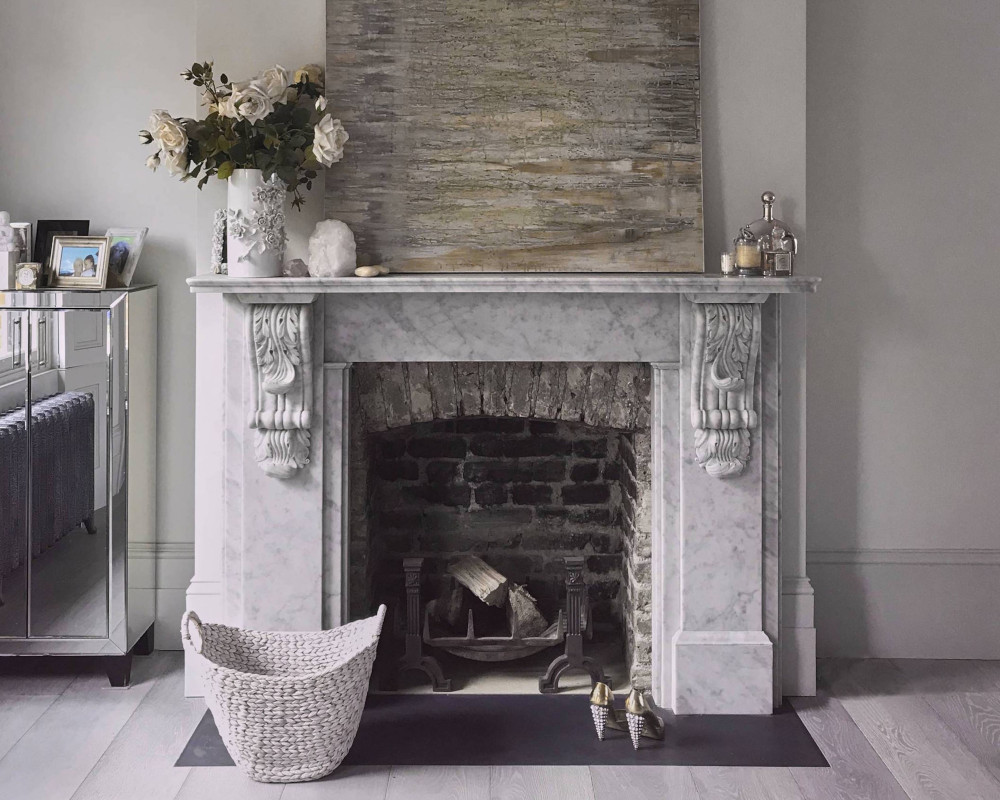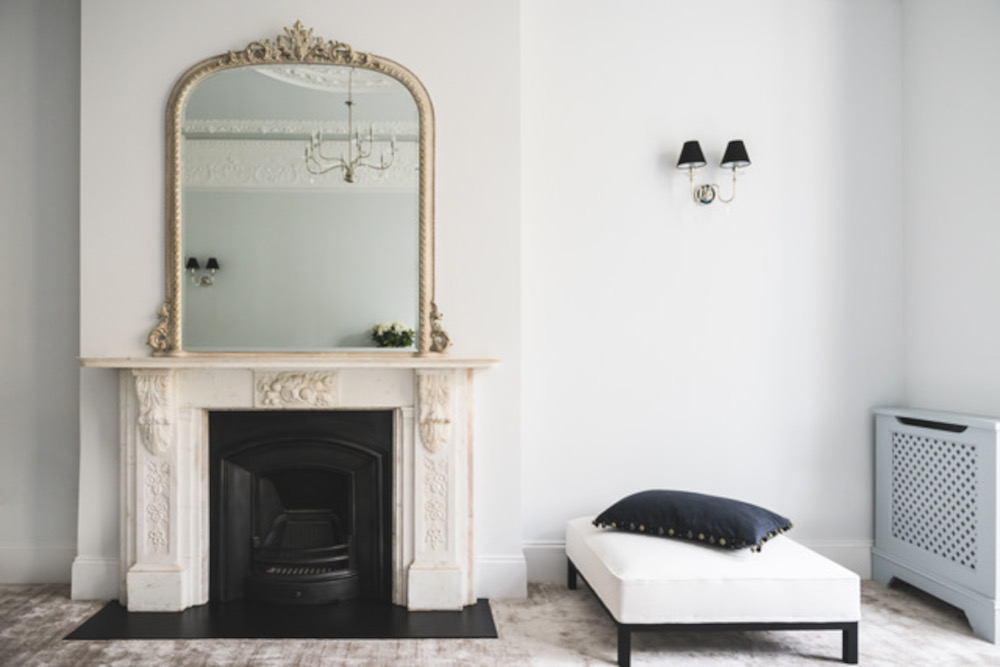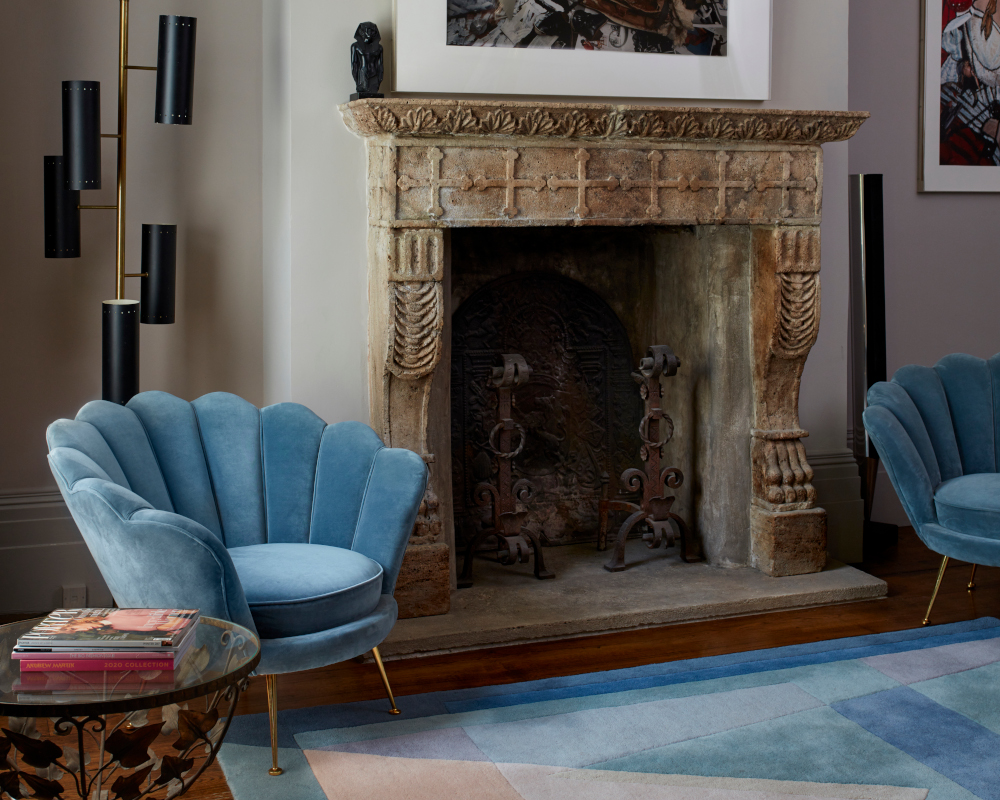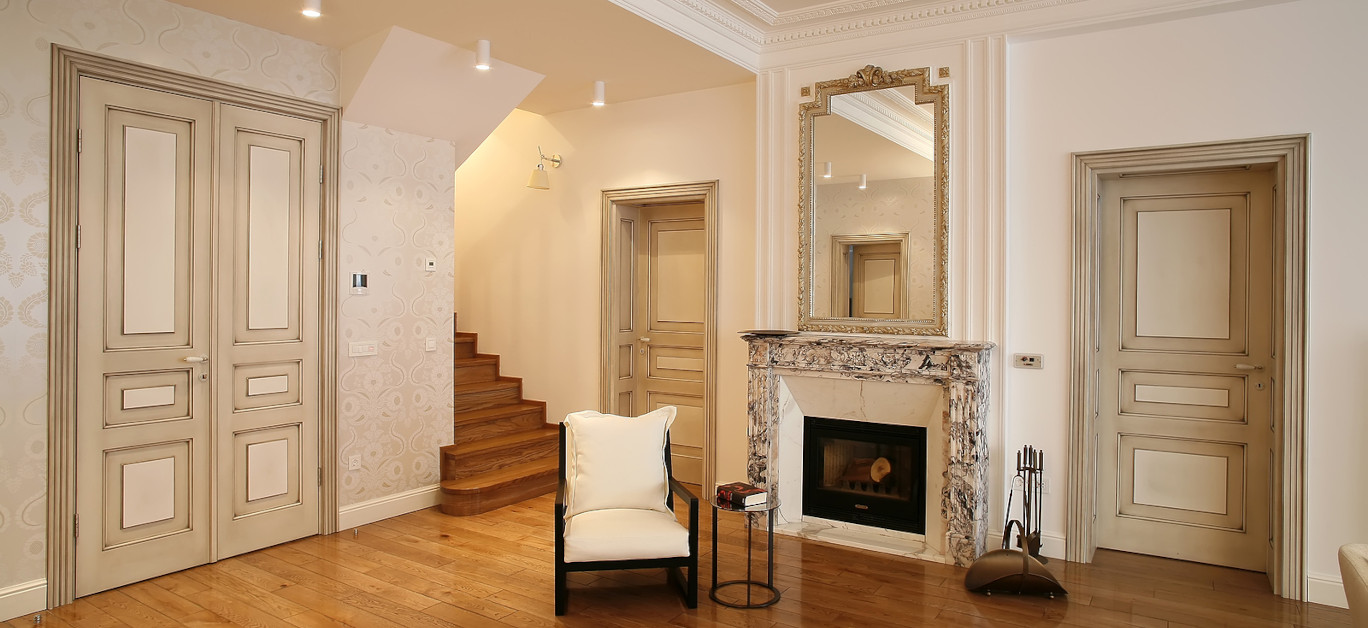Few things are as impressive and stunning as a white marble fireplace – they are the classical design touch that has stood for luxury for centuries.
Read on to discover antique restorer and founder of fireplace specialists Renaissance London, Owen Pacey’s top tips to consider when choosing a marble fireplace.
A material bursting with luxury and history

“I can tell more about a fireplace based on which part of London they come from,” notes Pacey. He goes on to say: “Some of the most impressive fireplaces I have seen are in the large Georgian townhouses between Harley Street and Devonshire Place. What sets them apart is their sheer size and corbel features. They are always made out of luxurious materials such as Carrara marble, due to the wealth of the gentry who lived there. I currently have a beautiful model from Wimpole Street in my collection.
“By contrast, Victorian fireplaces across Hackney will be much smaller and made from cast iron. We have some Arts and Crafts fireplaces that share the same motifs as lamp posts and fire hydrants, you can find lots of them around Spitalfields. Stylistically, the 18th to 19th century English fireplaces typically adopt clean, straight lines whereas historical French models have wavy contours in line with Rococo influence.”
How do you identify the right type of fireplace to match the period of a house?

Pacey explains that “in the Georgian period they made tens of thousands of bullseye style fireplaces, so this style is very typical in properties of that time”. He adds: “Similarly with Victorian, the most common design is Carrara marble with a shell design on the corbels. Edwardian fireplaces are beautifully intricate, mainly tiled and made from either cast iron or slate, with an Art Noveau feel to them as well.
“If you are unsure of the period of the house, a really good tip is to politely ask your neighbours to see if they have any original features in their house you can look at. It’s the best way to find out. Otherwise, you can gain a pretty good idea of the period of the house from the street view.”
Consider the flooring when installing a marble fireplace

“When it comes to installation, this often depends on flooring. The first thing I ask is what period the building belongs to or where the property is. Take a Georgian house for example, the ground floor and first floor are normally marble whereas the basement will be stone or slate. If someone comes to me looking for a first floor fireplace in a Notting Hill flat, I’ll know exactly what they need,” says Pacey.






















